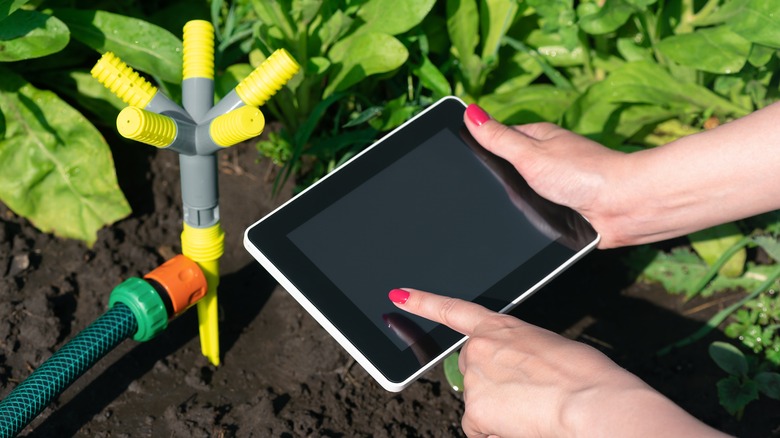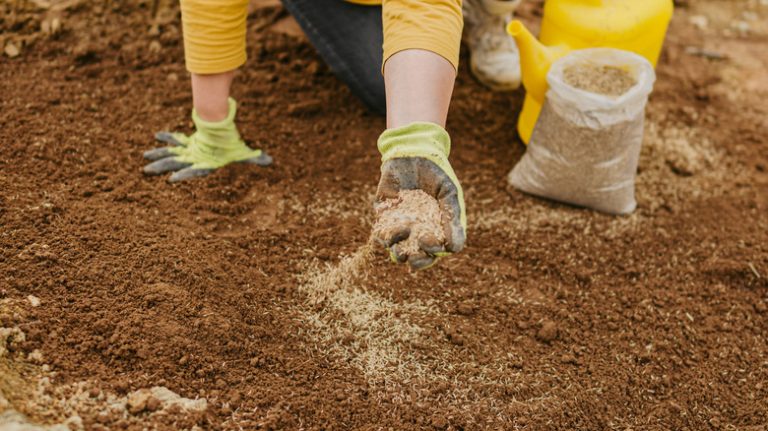If you’ve ever heard that you should give your lawn 1 to 2 inches of water per week, you might have wondered how on earth you’d measure the amount of water your sprinkler system puts out. There are a couple of ways to do it — most aren’t very precise, but there are more involved methods that can get pretty close. We’ll walk you through each, and you’ll likely see that the less certain methods are plenty accurate for most lawns and home gardens.
The commonly used shortcut for estimating your sprinkler system’s output is a rule of thumb. For an inch of water, you’d run pop-up sprinklers for 30 to 40 minutes and rotating sprinklers for 60 to 90 minutes, split up over the course of a week. The problem is that factors like flow rate, water pressure, and sprinkler pattern/overlap all conspire to make figures inaccurate. Matching sprinklers with identical coverage areas can easily vary in water output by hundreds or even thousands of gallons per month. Different types of rotating sprinklers can vary even more. And this is one reason it’s essential to fix even a small leak in your lawn’s sprinkler system. There are lots of ways to figure out your sprinklers’ precipitation rates (that is, how much water they provide) fairly precisely — but they can be tedious and perhaps overkill for the average homeowner just trying to keep her grass green.
How do you get an exact measurement?

There are two basic ways to calculate how long it takes to get an inch of water from your sprinklers. You can, of course, directly measure the output of each sprinkler head and then add them together. A better approach includes velocity-area methods that use flow measurement, like your home’s water meter readings. Then, you calculate how long it takes to put an inch of water on your accurately measured property. Let’s look at how that calculation works.
It takes about 27,000 gallons of water to cover an acre to a depth of one inch. This is, unsurprisingly, called an “acre inch.” Once you know how much water in gallons your system uses in a minute, multiply that by 60 to get the water output per hour. Now, you need to know the area you’re watering. The easiest way is to use Google Earth’s measurement tools to draw a line around your lawn or garden as precisely as you can, and it will tell you the area inside your shape. To find what portion of an acre you’re watering, divide this number (in square feet) by 43,681, the number of square feet in an acre. Finally, divide your water output per hour by the portion of an acre you’re watering. That’s how many hours of watering it will take to deliver an inch of water to your irrigated area. Of course, don’t forget to account for any rainfall you’ve gotten.
Why you don’t need to get so exact

Tracking water usage on a farm is critical for a number of reasons, but you probably don’t need to get that specific at home — and certainly not for watering your lawn. Turfgrass has ways of letting you know when it’s not getting enough water, like slow growth and a lack of springiness. Overly dry grass will tend to hold footprints, while well-watered grass will instantly spring back to near its original state after being walked on. So, just watch your grass to learn how much water it needs.
If you’re watering a flower or vegetable garden, you might need to pay more attention to the actual water flow. However, you might consider a different watering approach — since overhead watering can be bad for your garden plants. Garden plants have different water requirements, and with some plants – tomatoes, for example – consistency in watering is key. Unlike with grass, you can’t monitor the condition of the plants to determine if they’re getting enough water since wilting might cause irreversible damage. It’s often sufficient to track moisture levels in the soil itself: If your garden soil is moist enough to form into a ball in your hand but not wet enough to leave you holding mud, your soil is probably at a pretty good moisture level. Taking measurements with a soil moisture meter is a safer approach and easier than trying to figure out your sprinkler’s precipitation rate.

